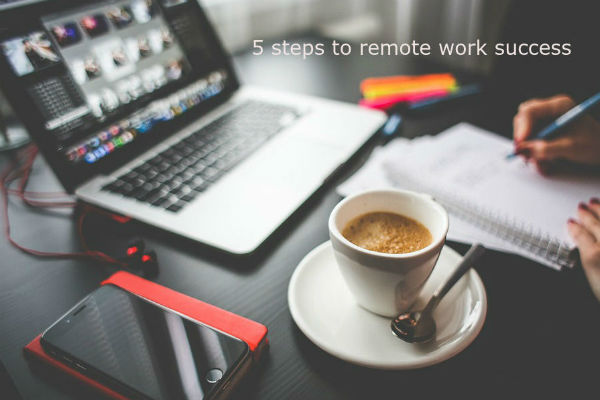Working remotely sounds so great but also like an indomitable challenge, right?
And yet more and more workers are doing it. A Gallup survey last year found that 43 percent of employed Americans said they spent at least some time working remotely in 2016. Millennials rate flexibility in work location and schedule more highly than any other generation.
Not every job — and not every employee — is going to work remotely. But there are some proven steps you can take in that direction if you want to dip your toe into the #digitalnomad lifestyle.
Win over your boss
- Use some of the stats provided above. Explain that this is a job benefit with a great cost/value ratio that hugely benefits you and doesn’t impact your employer’s bottom line.
- Try a test run: Start with a few hours or a day a week.
Nail down your home workspace
- You can’t prove yourself if you can’t actually work from home, so get a good desk and ergonomic chair. Get a better lamp than you have in your office. Make sure there’s physical separation between your workspace and your homelife in order to avoid distractions – even if that just means you’re facing a wall or put up a screen.
- While you’re working from home, assess realistically what helps/hurts you in an office environment. Does having other people around help you think through work challenges? Does having a window nearby keep you centered and focused? Do you benefit from having to get up and go to the watercooler/bathroom/lunch? Are you capable of “staying in the zone” through everyday distractions? How do you address these potential challenges and can you reasonably overcome obstacles to make remote working work for you?
Scope out working spaces
- Once you’re serious about this, you will need to find “third place” spaces to work somewhere between your home and office. Working from home can create “cooped up” feelings and a sense of unreality if you never leave.
- Needs for a good third place option: Close to home. Good internet. Comfortable chairs. Food/drinks on tap. A sense that it’s safe enough to leave your stuff on the table when you run to the bathroom (yes, this is a real concern in some places – think about it).
- Options include cozy coffee shops, some cafes (Panera is actually a popular choice; McDonald’s also typically has WiFi) and co-working spaces like WeWork or CoPass.
Set up boundaries
- If you don’t live alone, make sure everyone in your immediate environment is aware you’re working specific hours and just because you’re home doesn’t mean you’re “available.”
- Separate your life from your work as much as possible. Use a personal computer for personal things and a work computer for work things. Don’t make your bed your desk. Prep meals before work, just like you would if you were traveling to an office.
- If you can, take breaks during work hours. Go out for a walk or lunch. In general: Leave the house sometimes!
Traveling while working
- There are a wealth of resources and communities for people who travel while working remotely. Nomad List ranks cities for ease to digital nomads. You can buy a membership to an international co-working space or a flexible co-living/working community like Hacker Paradise. (Note that setting up a work-and-travel lifestyle can also go very wrong – read and learn from my own horror story). Just remember to plan ahead for all the same needs you have working from home: Distraction-free workspace. Internet. And add in time zone issues.
- My pro tip: Stay urban not suburban. Working from home in a location where you can’t quickly transport to a third location or interact with other people is going to drive you crazy.

